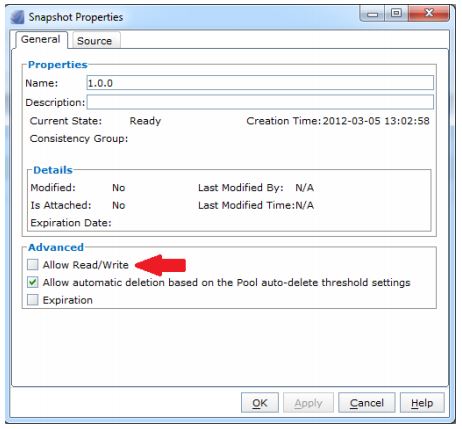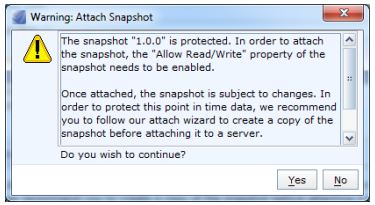
Creating a snapshot does not consume any pool space. The space starts being used when new writes to the primary LUN or to the snapshot itself arrive. Snapshots have a granularity of 8 KB, and their blocks are tracked just like the blocks in thin LUNs. Every snapshot must have a primary LUN, and that property never changes.A primary LUN cannot be deleted while it has snapshots. In Unisphere,You can delete a LUN that has snapshots by selecting an optional setting that deletes the snapshots first.

A pair of VNX Snapshots
Before creating a snapshot, use the SnapCLI utility to flush the host buffers.
:: Windows
SnapCLI flush -o G:

Create VNX Snapshots in Unisphere
# To create snapshot in the CLI
naviseccli snap -create -res 1 -name “cli_snap” -descr “snap created via CLI”
# ^^^
# LUN ID
Note: When a snapshot is first created, it is write-protected

Unisphere view of the VNX Snapshot write protection
When you try to attach a snapshot that has the Allow Read/Write option disabled, Unisphere automatically enables it and displays a warning.

Unisphere VNX Snapshot Attach warning
If a Snapshot is attached from the CLI, then the -allowReadWrite property must be set to “Yes”. Therefore, you must manually modify it prior to an attach command.
# To modify a snap in the CLI
naviseccli snap -modify -id “cli_snap” -allowReadWrite yes
See How to create Snapshot Mount Point